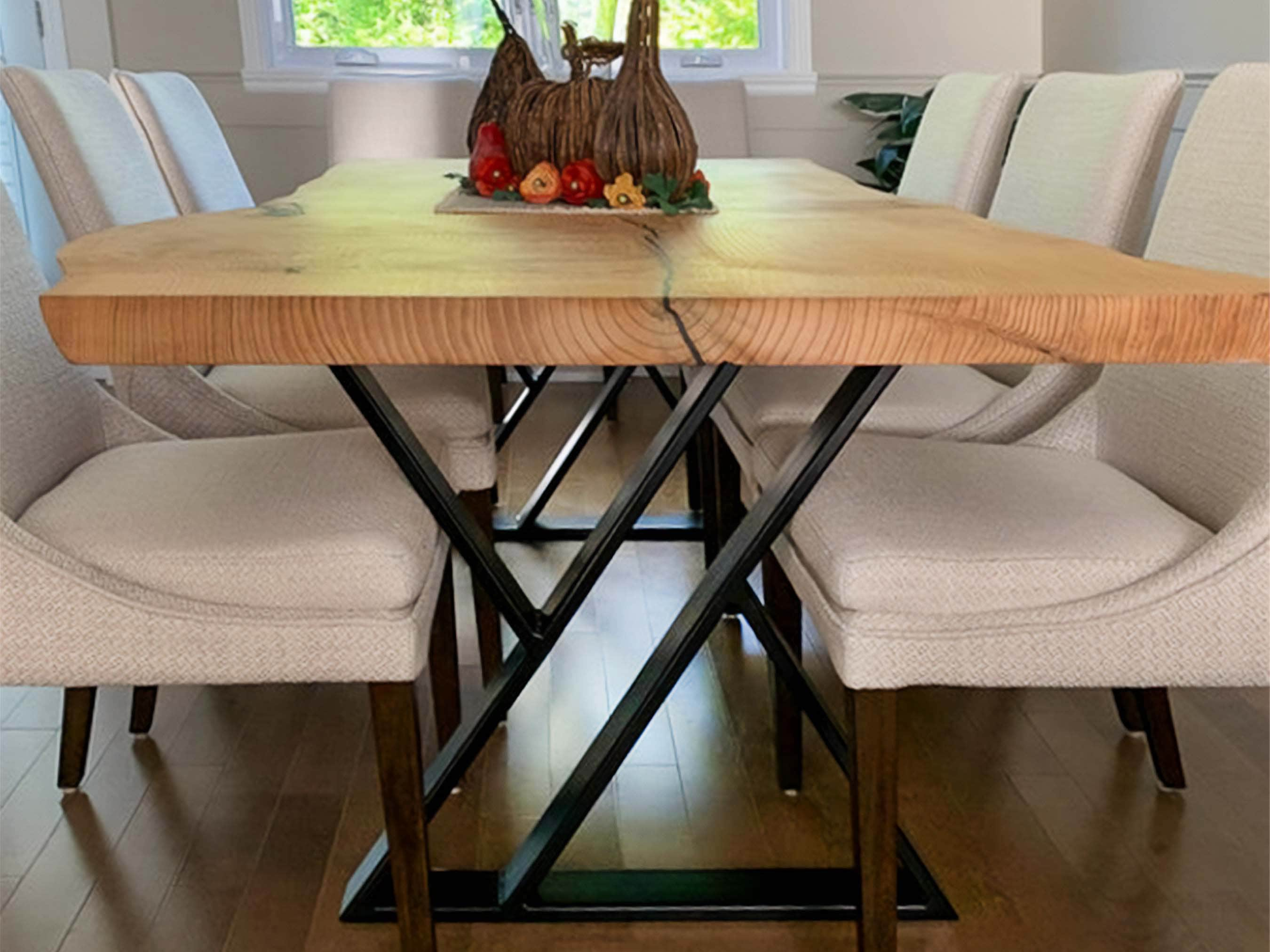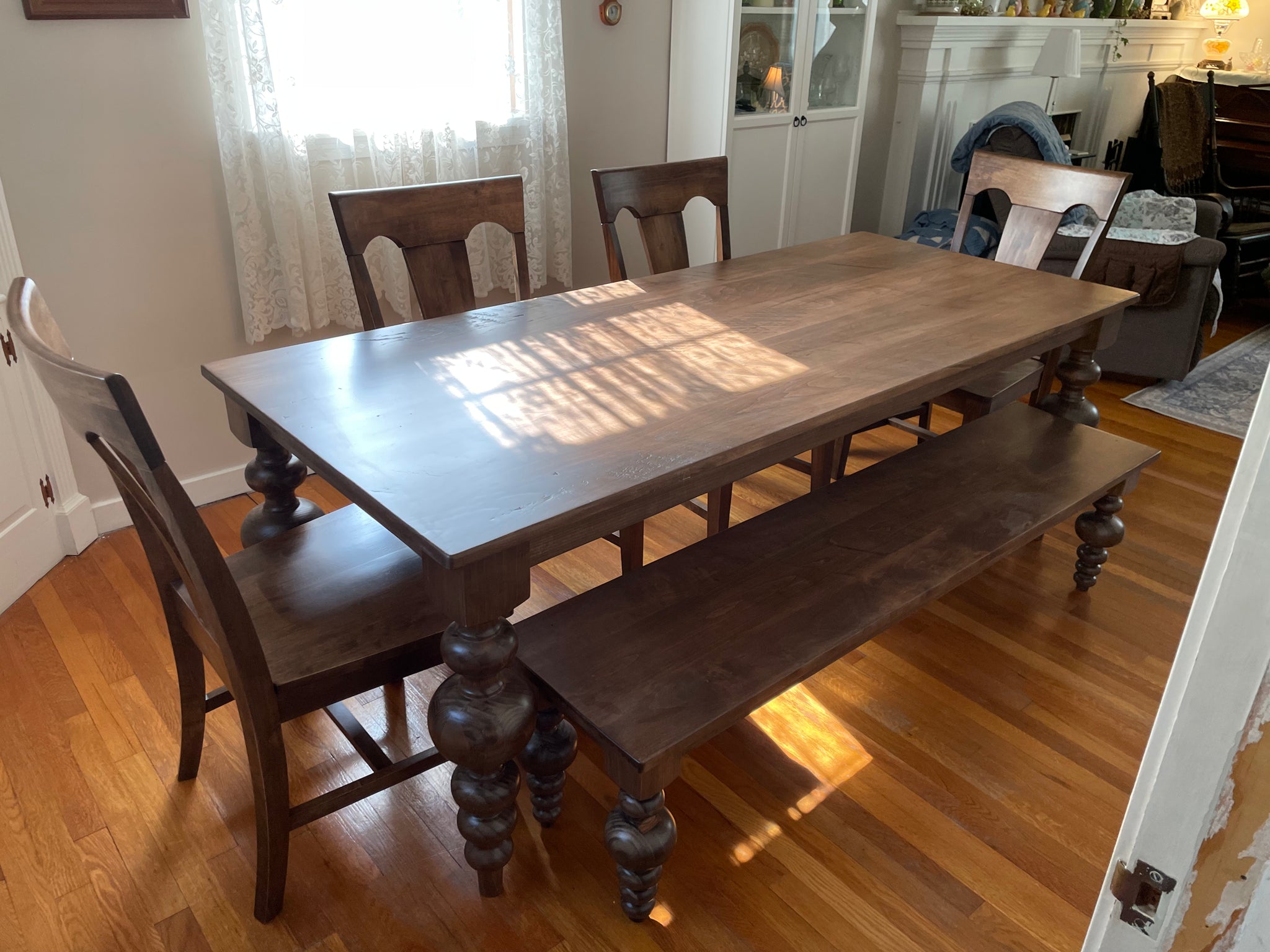How to Choose the Perfect Dining Room Table Legs for Your Home
Professional Tips for Setting Up Dining-room Table Legs for Maximum Security
When it comes to setting up eating area table legs, attaining optimum stability is vital for both functionality and appearances. What certain methods can improve stability even further?
Choose the Right Legs
When picking the appropriate legs for your dining-room table, it is vital to consider both functionality and visual appeals. The legs you pick will substantially affect the total layout and security of the table. Initially, examine the table's intended use; if you expect regular gatherings, tougher legs, such as those made from strong timber or metal, may be extra suitable, as they offer enhanced sturdiness and support.
Following, think about the elevation and design of the legs in regard to the tabletop. Basic table typically vary from 28 to 30 inches in height, so ensure the legs align with this criterion for convenience. The design of the legs need to complement the style of the table top-- whether it be modern, rustic, or traditional. As an example, conical legs can include a modern touch, while transformed legs could communicate an extra classic aesthetic.

Select Appropriate Hardware
How can the ideal hardware boost the stability and longevity of your eating space table? The choice of proper equipment is critical to making certain that the legs of your table are securely attached and able to withstand routine usage. High-grade screws, bolts, and brackets provide the needed strength to support the weight of the table, along with any extra tons put upon it throughout celebrations or meals.
When choosing screws, go with those made from resilient products such as stainless steel or brass, which withstand corrosion and maintain integrity over time. The size of the screws is similarly essential; they must pass through deeply right into the table's structure without compromising honesty. For bolted connections, consider utilizing lock washing machines to avoid loosening up because of vibration or motion.
In addition, using corner braces can add extra assistance, specifically for larger tables or those with much heavier tops. These brackets disperse weight equally and aid keep the table's form. Making certain that the hardware you pick is appropriate for the particular materials of your table will certainly even more improve its overall stability and longevity, allowing you to enjoy your dining experience for years to find.
Ensure Correct Placement
Proper placement of eating room table legs is crucial for both visual charm and functional security. To achieve ideal positioning, start by measuring the range from the table's edges to the leg attachment factors.
Utilize a level during installation to confirm that each leg is perpendicular to the tabletop. This action is crucial, as even small disparities can intensify into considerable stability issues gradually. It is recommended to note the preferred leg settings on the bottom of the table with a pencil or masking tape before protecting them. This technique functions as a visual guide, permitting adjustments as required.
In addition, verify the placement after the initial screws are tightened up, as modifications might be required before completely protecting the hardware. By focusing on appropriate positioning, you not only boost the table's total layout but likewise ensure that it continues to be secure and functional for many years to find.

Consider Weight Circulation
After ensuring proper positioning of the eating area table legs, it is necessary to take into consideration weight circulation to improve stability and functionality. dining room table legs. Appropriate weight circulation is critical in protecting against making certain and tottering that the table can sustain its intended lots without risk of tipping or falling down
When positioning the legs, guarantee they are put at equal distances from the center of the table to equally distribute the weight throughout the structure. Think about the weight of the table top and any kind of products that will frequently hinge on it, such click for source as ornamental pieces or tabletop home appliances. Tables with much heavier surface areas need to ideally have legs positioned closer to the corners, as this makes best use of the base of assistance and lessens the risk of instability.
Additionally, if the table is planned for use in a high-traffic area, think about using much heavier products Find Out More for the legs or including stabilizing components, such as cross-bracing or a reduced rack - dining room table legs. These modifications can help maintain balance and avoid moving throughout usage. Ultimately, a well-considered weight circulation method will substantially enhance the table's general efficiency, ensuring it stays a appealing and functional centerpiece for your dining room
Examination Stability Before Use
Evaluating the stability of the eating room table prior to use is an essential step that ought to not be forgotten. If the table shows instability, identify the legs or joints that may need change.
Next, inspect that all fasteners and screws are tightened appropriately. Loosened links can result in instability and possible damage in time. If needed, make use of wood adhesive on joints to improve security, making sure to permit sufficient drying time.

Final Thought
Finally, the installation of dining-room table legs needs cautious factor to consider of materials, weight, equipment, and placement distribution to achieve maximum stability. By picking durable legs and high-grade bolts, making certain precise placement, and dispersing weight uniformly, the architectural honesty of the table can be dramatically improved. Conducting a security examination prior to routine use further makes sure that the table will hold up against day-to-day pressures, thereby giving a risk-free and dependable dining experience.
When it comes to mounting dining area table legs, attaining maximum security is vital for both functionality and looks. The legs you select will considerably impact the overall style and security of the table (dining room table legs). Conventional dining tables normally vary from 28 to 30 inches in elevation, so make certain the legs straighten with this standard for comfort.Proper placement of dining space table legs is necessary for both aesthetic appeal and practical stability.In conclusion, the installment of eating room table legs needs cautious factor to consider of materials, positioning, equipment, and weight distribution to attain optimum stability